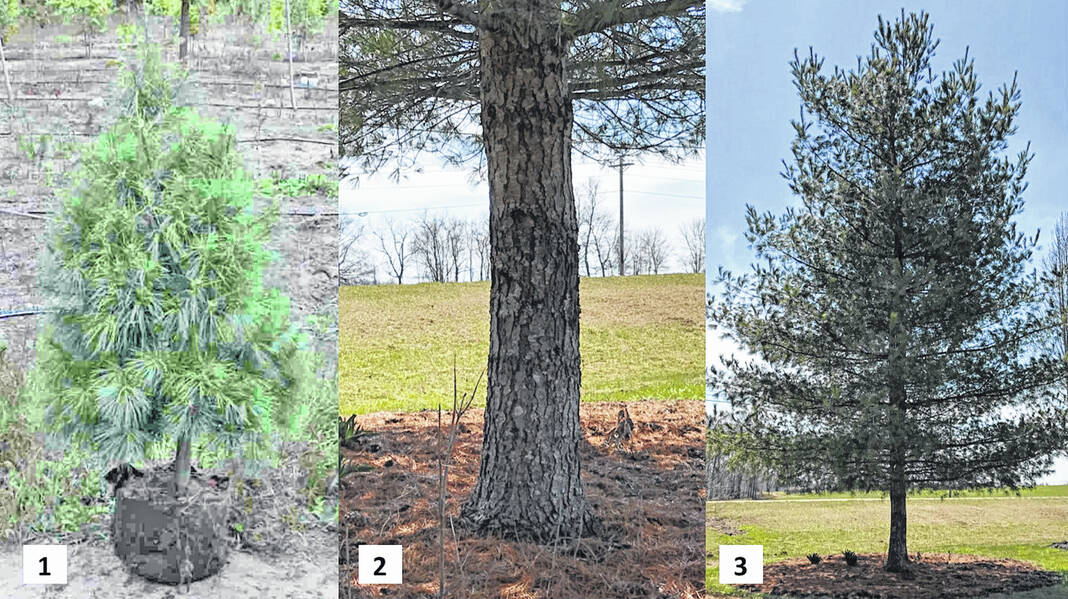

Have you ever noticed how mature evergreen trees have lots of dead branches on them? They tend to be the lowest ones on the tree. Eventually they rot and fall off, making a mess and leaving unsightly stubs.
Not a single branch on a young spruce or pine tree will survive to adulthood. It truly doesn’t matter what shape the tree has when you plant it, as long as the trunk is straight. Whether you cut the lower branches off yourself or just wait for them to die off naturally, “baby branches” are just clutter that the tree will abandon as it grows larger. Almost all the new growth from the time you plant will be on the upper branches, which will eventually stretch out and sag to the ground.
Evergreen trees vary but they have one thing in common. As they grow and create shade, their inner and lower foliage withers and dies from lack of sun. White Pines don’t sprout new needles on their inner branches, only at the tips. Spruce trees keep the needles on their inner limbs only as long as the sun can reach them, and then the needles die and fall off. We call this cycle “self-mulching”, because fallen evergreen needles make terrific mulch and even help feed the tree in an endless cycle.
Perhaps you’ve planted young evergreen trees yourself. Consumer-sized pines and spruces tend to be about four feet tall, because larger trees are expensive and too hard to handle. Young evergreens are sold three different ways, depending on the nursery: either “natural” (never sheared), “Semi-sheared” (perhaps sheared once or twice for shape when younger) or sheared each year into a neat cone like a Christmas tree.
One task we find ourselves doing during landscape “makeovers” is diving down under established spruces and pines and “limbing them up.” This housekeeping makes it easier to clean out weeds and debris trapped under all the dead frizz, allowing us to neatly spread mulch all the way to the trunk. What we’re doing is cutting off all the original branches the tree had when it was originally planted, which are now dead and dried out. The result looks much tidier and more professional. The lowest limbs now originate four feet up the trunk, but as they grow they will eventually sweep the ground.
Since most pines and spruces eventually spread to twenty feet or more, it’s pointless to try and maintain lawn under them. The best practice is to constantly enlarge the mulch circle out to the tips of the bottom branches. The shade and the constant shower of dead needles will discourage weeds, making the mulch circle virtually maintenance free except for enlarging the circle each year.
This characteristic of evergreen trees suggests that they should never be planted closer than ten to fifteen feet from any building, paving, walking path or any other feature where the tree might eventually conflict. Spacing between trees can be closer, as close as eight feet if privacy or windscreen is the objective, but this means the trees will grow together into a solid barrier with the green foliage all around the outside. Where the trees touch each other the foliage will wither and die, but this will be on the inside where it doesn’t show.
One more piece of advice about spruces and pines: when they are young they often develop two or more parallel trunks from a fork low on the tree. This is a serious structural defect called “co-dominant leaders” that will cause the tree to split in half someday. It’s very important to watch for this while your tree is young and it’s easy to fix. Just cut off the weaker of the two at the spot where they fork, so the stronger trunk can take over. Evergreen sap quickly seals pruning cuts against insects and disease.



